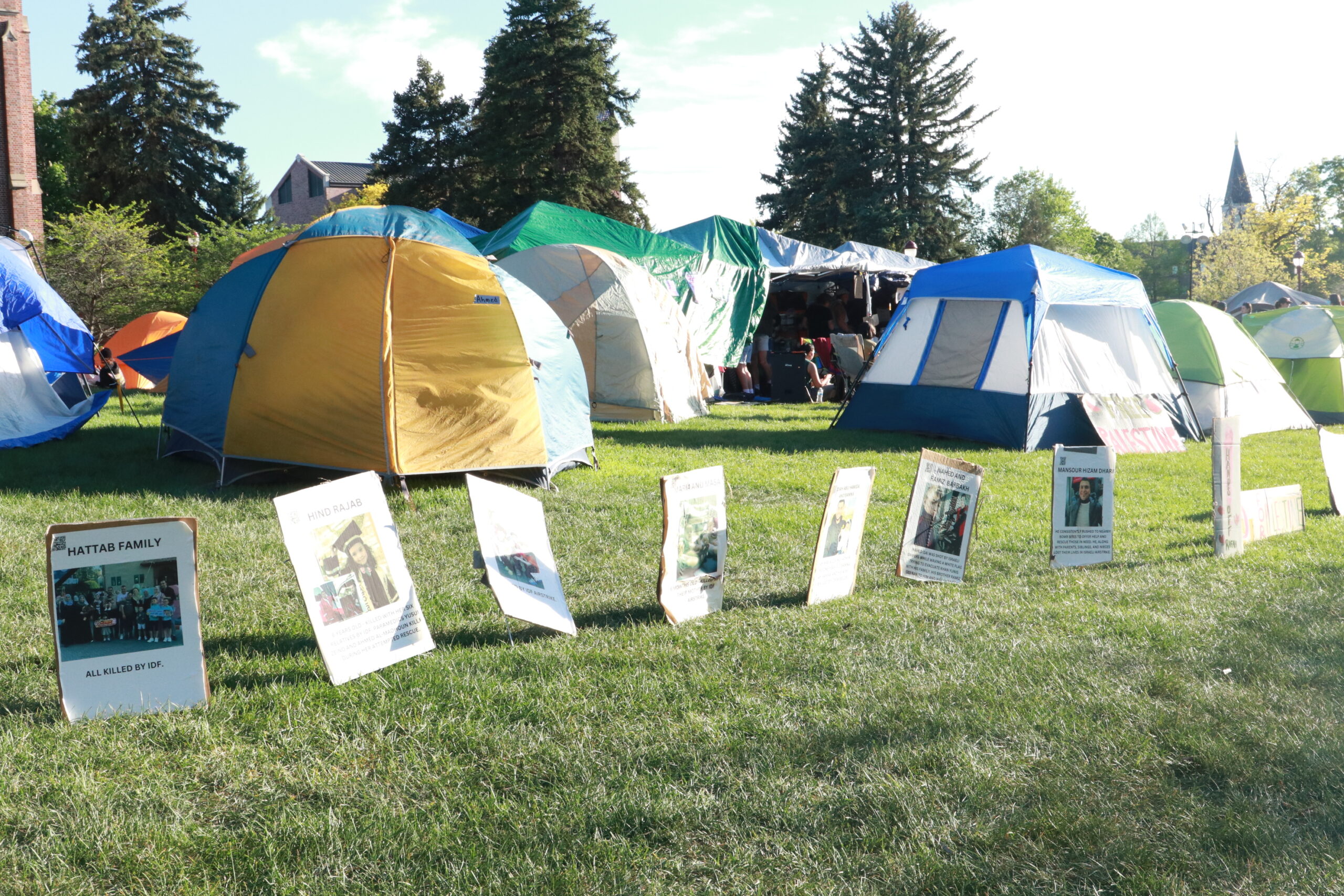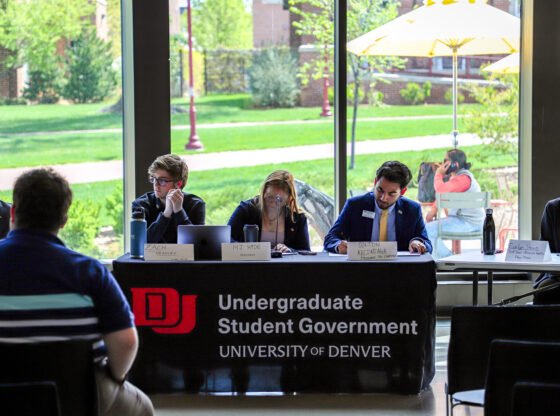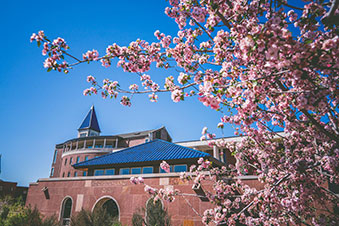It has been 148 days since Mahsa Amini was killed by the Islamic Regime’s morality police in Tehran, Iran. In the face of the University of Denver’s lack of public statement regarding her death or support of the revolutionary protests that followed, DU Professors Poupeh Missaghi and Laleh Mehran and Ph.D. candidate Mona Moayedi, all Iranian women, composed an educational exhibit about the revolutionary movement to raise awareness and encourage the DU community to take action.
The Woman, Life, Freedom exhibit sits on the first floor of the Community Commons. Across the way, students bustle in and out of Starbucks and the Center for Sustainability. Stepping inside the exhibit, songs from Spotify’s Women of Iran playlist set the tone for the open-sourced protest art. Brown posters painted with popular slogans and works by DU students adorn the walls.
“Open-source is an important aspect of the movement because … it’s a grassroots movement, so sharing art and sharing protest art in a similar way is in the spirit of the revolution,” explained Dr. Missaghi.
Dr. Missaghi stressed that this movement is not an isolated incident, but rather a global movement fighting for autonomy for women worldwide. She hopes the exhibit will inspire greater solidarity and action within the Denver community.
“The same slogan, Woman. Life. Freedom., has been picked up by women in Afghanistan, and we picked it up from Kurdish women. It’s already being used in Turkey, women in Chile picked it up… that is more important [than politicians’ statements] because it shows that we are one community,” Dr. Missaghi said.
While it’s been in the works since October, the exhibition officially opens this Wednesday and will be here until March 10. The official opening on Feb. 15 from 2-6 p.m. is open to the public.
The opening comes at a decisive moment for the revolutionary movement. While public protests are not as frequent as they were in the first few months following Amini’s death, the movement has by no means stopped; to the contrary, AmirReza Mehraeen, an Iranian political activist and DU Ph.D. candidate, believes it has come too far to turn back.
“That scenario, although it should be considered by analysts… it’s not something that we can consider. That is not an alternative. [Iranian people will accept] nothing short of a successful revolution to a secular democracy, end of story,” emphasized Mehraeen.
The movement’s horizontal nature has been a great strength in showing the scope of dissent against the Islamic Republic regime. Looking forward, a loose coalition of prominent Iranian activists from across the political spectrum met on Friday to discuss a more concrete opposition and the future of the movement.
This exiled coalition is not the only international entity with leverage. While the U.S. government has been sanctioning Iran for decades, Mehraeen points out that many high-level members of the Islamic Revolutionary Guard Corps (I.R.G.C.) have yet to be properly sanctioned. Also, the European Union has not yet recognized the movement in Iran as a revolutionary movement, nor has it called out the Islamic Republic as illegitimate or declared the I.R.G.C. a terrorist organization, actions that Mehraeen say would go far in denying the regime’s legitimacy.
But both Dr. Missaghi and Mehraeen emphasize that, at the end of the day, the choice is up to the people living in Iran and that the international community must continue to amplify Iranian voices. “Whatever is happening outside Iran needs to be following what’s happening inside Iran. We can’t decide for people on the ground,” said Dr. Missaghi.
Check out the #WomanLifeFreedom: Iran Today exhibit in the Community Commons Gallery 1001. It will be open through March 10. All are welcome.











